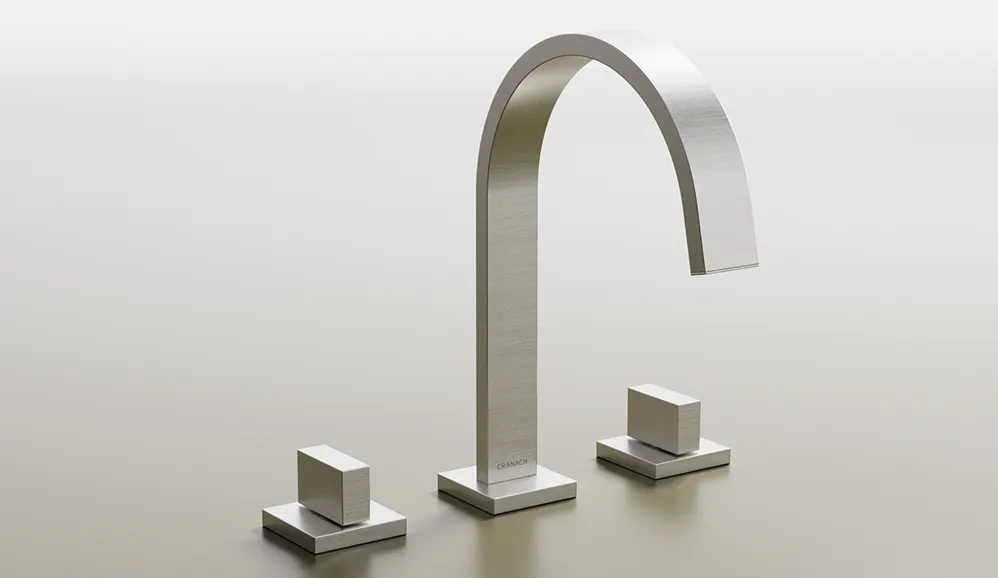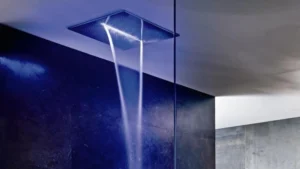We’ve all been there—you finish a relaxing shower only to spot a web of hair clinging to the drain. It’s a moment that can spark a little panic, but let’s get straight to the point: losing 50 to 100 hairs during your wash is perfectly normal. It’s not a sign that something is wrong; it’s just your body’s natural, healthy hair renewal process in action.
How Much Hair Is Normal to Lose in the Shower?
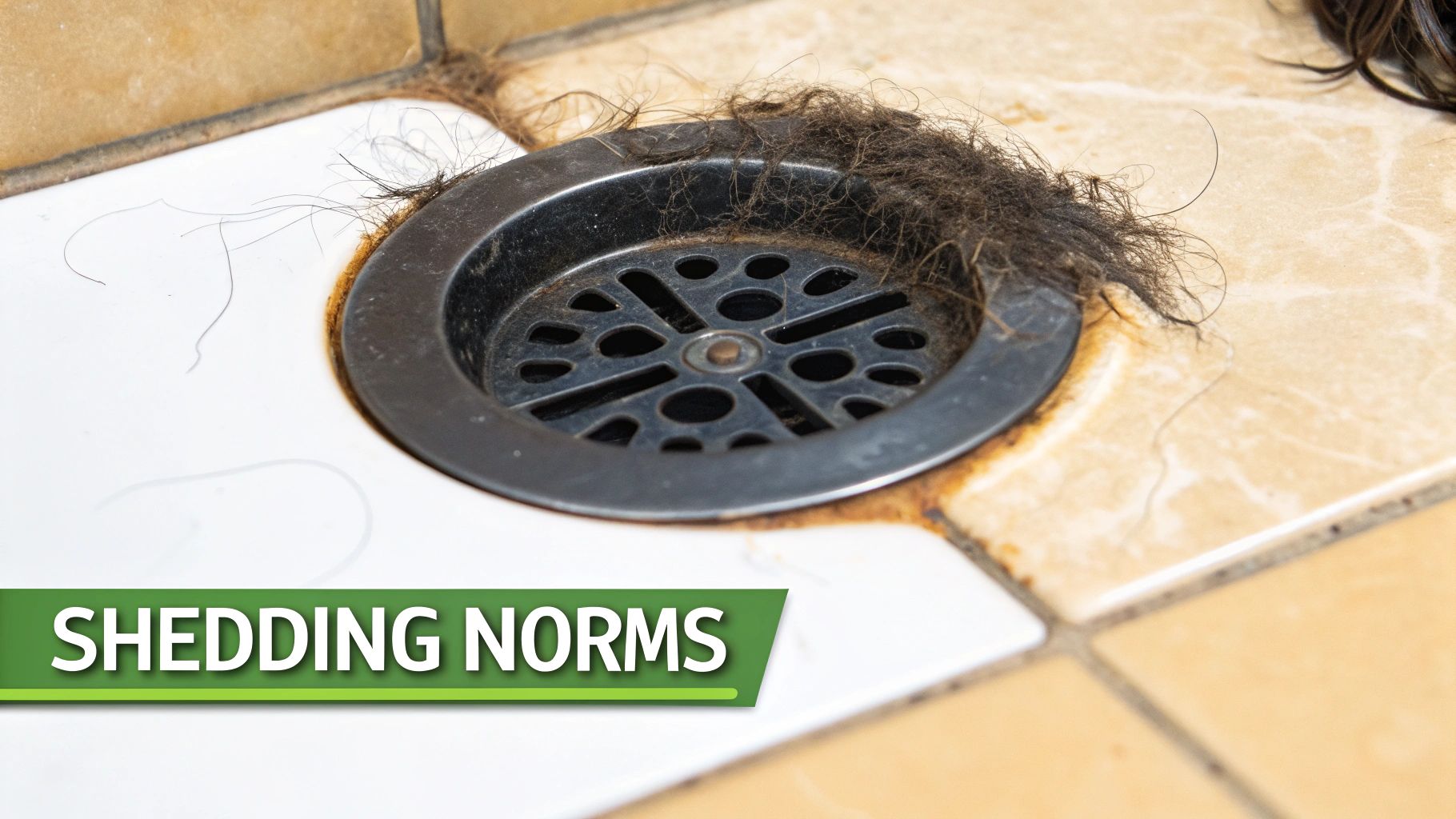
Seeing that clump of hair can feel unsettling, but it’s usually just a visible sign of a healthy biological cycle. Think of it this way: your scalp is constantly pushing out old strands to make way for new, healthy ones. The scrubbing and rinsing you do in the shower simply helps release the hairs that were already at the end of their growth phase and ready to fall out.
This is a totally normal experience for everyone. In fact, the average person sheds between 50 and 150 strands every single day. A lot of this happens in the shower, simply because that’s when we’re massaging our scalps and working through our hair. Of course, if you have long or thick hair, the amount you see can look much more substantial than it actually is. You can learn more about the science behind daily shedding from the health experts at Cleveland Clinic.
Why Washing Frequency Matters
How often you shampoo makes a huge difference in what you see in the drain. If you only wash your hair a couple of times a week, the loose hairs that would have naturally fallen out day by day just hang around, tangled up with the rest of your hair.
Then, on wash day, all those accumulated strands come out at once. It can look like a shocking amount of hair, but it’s really just a few days’ worth of normal shedding all appearing at the same time. You aren’t losing more hair overall; you’re just seeing it all in one go.
Key Takeaway: A larger amount of hair in the shower drain usually just reflects accumulated shedding from the days you didn’t wash it. The total number of hairs you lose over a week typically stays the same.
To help put this into perspective, here’s a quick reference guide showing how your wash schedule impacts what you see.
Estimated Hair Loss Per Shower Based on Washing Frequency
This table gives you a general idea of how shedding can look more dramatic the longer you wait between washes.
| Washing Frequency | Estimated Hair Strands Lost Per Shower |
|---|---|
| Daily | 50 – 100 strands |
| Every 2-3 Days | 100 – 250 strands |
| Once a Week | 250 – 400+ strands |
Seeing these numbers can be reassuring. By understanding this simple pattern, you can feel much more confident about what’s normal for your hair and what might be a signal to pay closer attention.
Understanding Your Hair’s Natural Renewal Cycle
Seeing a clump of hair in the shower drain can be unsettling, but it’s rarely a cause for alarm. Think of your scalp like a garden—old leaves have to fall away to make space for fresh, new growth. The hair you lose during a wash isn’t a sign of a problem; it’s just your body’s way of clearing out the old to welcome the new.
This constant renewal is driven by the hair growth cycle, which has four distinct phases. Every single hair on your head is at a different point in this cycle, which is why you don’t lose all your hair at once. The strands that come out in the shower are typically in the final, shedding phase, having already completed their life.
It’s completely normal to lose between 50 to 100 hairs a day. This shedding often seems more dramatic in the shower because the water and the motion of washing your hair help to dislodge the strands that were already ready to fall out. So, if you only wash your hair a few times a week, you might notice more hair in the drain, but it’s just the cumulative total.
The Key Phases of Hair Growth
To really get why shedding happens, it helps to understand the journey each hair takes. The cycle is a fascinating process.
- Anagen (The Growth Phase): This is the main event. Your hair is actively growing, and this phase can last for several years.
- Catagen (The Transition Phase): A brief, transitional stage. The hair follicle shrinks and detaches from the scalp’s blood supply, signaling the end of active growth.
- Telogen (The Resting Phase): The hair follicle takes a break for a few months. While the old hair is resting, a new hair starts forming underneath it.
- Exogen (The Shedding Phase): Finally, the old hair is pushed out by the new, incoming hair and falls away. This is the hair you see in your brush or in the shower.
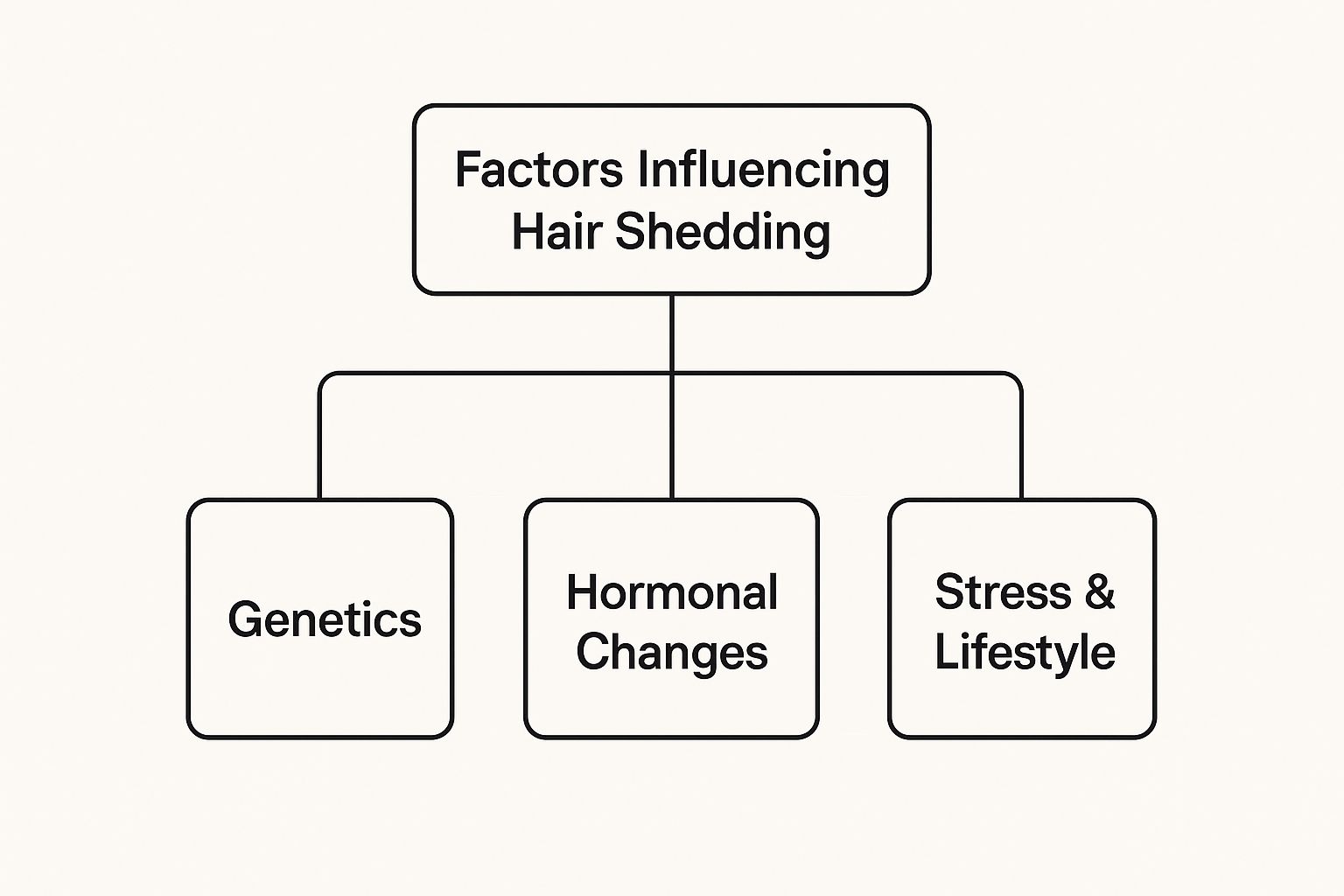
As you can see, everything from genetics and hormones to your daily lifestyle choices can affect how much hair you shed. And while you’re thinking about your shower habits, it’s also interesting to consider their broader impact. For instance, you might be curious to learn how many gallons of water a shower uses and how that affects your home and the environment.
Everyday Factors That Influence Hair Shedding
The amount of hair you see circling the drain isn’t a fixed number. It can change day by day, influenced by everything from your stress levels to the time of year. Getting a handle on these triggers is the first step to understanding what’s a normal amount of shower hair loss for you.
Think about it—your hair is often a direct reflection of what’s going on inside your body. A stressful week at work, a major shift in your diet, or even just a few nights of poor sleep can throw your hair’s growth cycle out of whack. This can nudge more hair than usual into the shedding phase, resulting in a temporary uptick in what you see on the shower floor.
Even the changing seasons can have an effect. Some research points to a slight increase in shedding during the late fall. This is likely an old evolutionary holdover, and while the difference is typically small, it adds another layer to the story of your hair.
Your Unique Hair Profile and Hormonal Shifts
Your specific hair type plays a huge role in what you see. If you have thick, long, or curly hair, you’ve probably noticed that loose strands tend to get caught up in the rest of your hair throughout the day. When you finally wash and detangle it, all that accumulated hair comes out at once, making it look like you’re losing a lot more than you actually are.
Hormones are another major player. Significant hormonal shifts can trigger a condition known as telogen effluvium, which is a fancy way of saying a large number of hairs are prematurely pushed into the resting (telogen) phase and then shed at the same time.
Some of the most common culprits for this include:
- Postpartum recovery: It’s very common for new moms to see increased shedding a few months after giving birth as their estrogen levels rebalance.
- Menopause: The hormonal rollercoaster of menopause can also lead to changes in hair thickness and shedding patterns.
- Starting or stopping medications: Certain medications, especially those that affect hormones, can disrupt your hair’s natural cycle.
A sudden jump in shedding can feel alarming, but it’s often a delayed reaction to something that happened in your life a few months ago. Pinpointing the event can bring peace of mind that it’s just a temporary phase.
Believe it or not, even your shower’s performance can make a difference. Low water pressure might force you to scrub your scalp more vigorously to get all the shampoo out, leading to more friction and potential breakage. If you think weak water flow is a problem, check out our guide on how to increase water pressure in your shower for some easy fixes.
How Your Shower Routine Affects Hair Health
The way you care for your hair in the shower can mean the difference between normal, healthy shedding and unnecessary breakage. It’s surprising how a few simple tweaks to your routine can protect your hair and minimize what you find in the drain.
It all starts with the water. As incredible as a piping hot shower feels, that high heat can be tough on your hair. It strips the natural oils from your scalp and can weaken the hair follicles over time. A much better approach is to use lukewarm water—it cleanses just as well without putting extra stress on your hair.
Optimizing Your Washing Technique
Beyond temperature, how you wash matters just as much. It’s easy to get in there and scrub aggressively, but this can create tangles and snap delicate strands. Instead, think of it as a gentle scalp massage. Use the pads of your fingertips (never your nails!) to work in your shampoo. This stimulates blood flow to the follicles, which is great for growth, and avoids the friction that causes mechanical damage.
The frequency of your washes also plays a huge role in what you see in the drain. If you wash your hair daily, you might see around 50-70 hairs. Wait a couple of days, and that number can look more like 100-150 hairs. If you’re a weekly washer, seeing 150-300 hairs is completely normal, simply because the shedding has accumulated. You can find more insights on shower hair loss to see how your routine compares.
Investing in the right shower hardware is another powerful step. A quality CRANACH shower system, for example, provides controlled, even water pressure that is much kinder to your scalp and strands.
A superior shower faucet system or shower set can genuinely create a healthier environment for your hair. These top-tier shower systems are designed to deliver a gentle yet thorough rinse, making sure you wash away styling products without blasting your hair with harsh, damaging pressure.
And don’t forget maintenance! A clean fixture ensures you’re getting that optimal water flow. If you notice hard water buildup, our guide on how to clean a shower head with vinegar offers a super simple fix to keep your system working perfectly.
Red Flags That Signal It’s More Than Normal Shedding
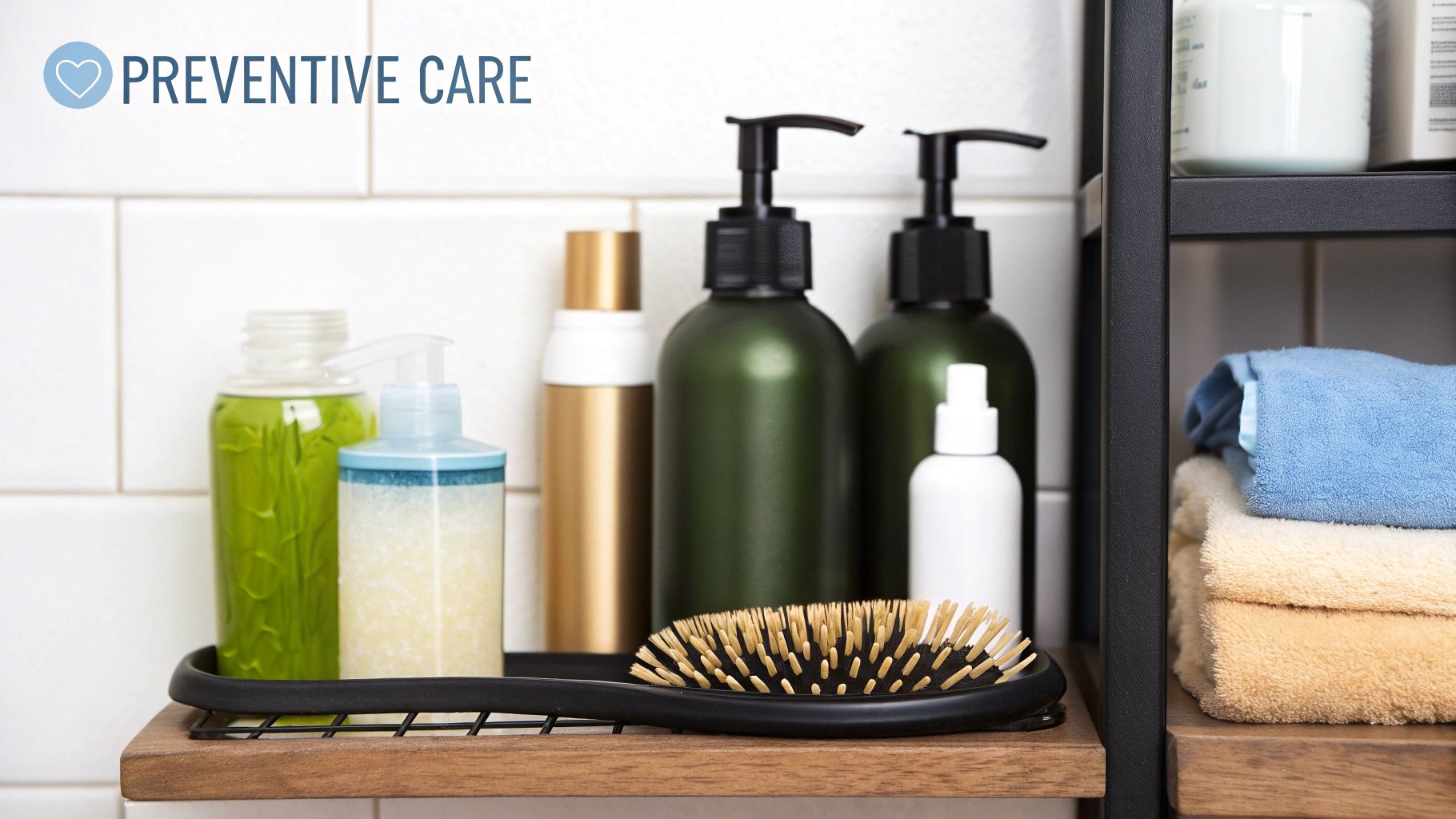
We’ve established that some daily shedding is perfectly healthy, but it’s just as crucial to know when something is off. The key is paying attention to changes from your personal baseline. After all, you know your hair better than anyone.
So, what’s the first big sign? A dramatic increase in the amount of hair you’re losing. If you suddenly start seeing way more hair circling the drain or tangled in your brush, and it stays that way for a few weeks, it’s time to investigate. We’re not talking about one heavy wash day; this is a consistent, noticeable shift.
Identifying Specific Warning Signs
Another major red flag is seeing hair fall out in large clumps. Normal shedding is a strand-by-strand affair. Finding actual handfuls of hair coming out at once is a clear signal that something more serious might be at play.
A common culprit for this is a condition called telogen effluvium. This is when a significant stressor—like an illness, surgery, or major life event—pushes a large number of your hair follicles into the shedding phase all at once. It typically causes a diffuse, all-over thinning rather than specific bald spots.
Be on the lookout for these specific signs that something has changed:
- Visible Thinning: Is your part looking wider than it used to? Can you see more of your scalp through your hair?
- Bald Patches: Finding completely smooth, often round, bald spots on your head is a definite warning sign.
- Scalp Irritation: If your shedding comes with an itchy, red, painful, or flaky scalp, your follicles are trying to tell you something.
Spotting these signs early gives you the power to act. And while you’re focused on your hair, remember that overall well-being plays a huge role. For tips on incorporating more holistic care into your routine, check out our guide on The Wellness Shower, a unique approach to cleansing.
If any of these symptoms persist, the best next step is always to chat with a dermatologist or your doctor to get to the root of the problem.
Common Questions About Shower Hair Loss
Let’s tackle some of the most common questions people have about the hair they find in the drain. Think of this as a quick-fire round to clear up any lingering concerns about what’s normal and what’s not.
One of the biggest questions is whether it’s better to brush your hair before or after hopping in the shower. The best approach? Brush it before you get it wet. Hair is at its strongest when it’s dry. When it’s wet, it becomes more elastic and much more fragile, making it incredibly easy to snap or pull out when you’re trying to wrestle with knots.
By getting the tangles out beforehand, you’re not yanking on your hair during the shampooing process. You’ll still see some hairs come loose—those are the ones that were already meant to fall out that day—but you’ll avoid causing extra, unnecessary breakage.
Practical Answers to Frequent Worries
People often ask if their go-to hairstyle could be making things worse. It absolutely can. Styles that pull on the scalp—like tight ponytails, snug braids, or high buns—put constant stress on your hair follicles.
This steady tension can lead to a specific type of hair loss called traction alopecia, which can cause breakage and even permanent follicle damage over time. It’s a good idea to mix up your hairstyles and give your scalp regular breaks from all that pulling.
A big concern after a stressful life event is how long it takes for hair shedding to stop. Stress-related shedding, known as telogen effluvium, usually kicks in 2-3 months after the event. The good news is that once the stress is managed, your shedding should gradually return to normal, though it can take several months for your hair to feel like its old self again.
Here are a few more quick answers to common worries:
- Can the wrong shampoo cause more shedding? Definitely. Harsh, stripping shampoos can irritate your scalp and weaken your hair. Stick with gentle, nourishing formulas that support scalp health.
- Does water quality make a difference? It sure does. Hard water is packed with minerals that can build up on your hair, leaving it dry, brittle, and much more likely to snap. A quality shower faucet system can help control flow, and you can even find ones that accommodate filters.
- Is it normal to lose more hair in the winter? Some research suggests we shed more in the fall, but winter brings its own challenges. Dry indoor heat can sap moisture from your hair, making it brittle and prone to breaking, which many people mistake for true shedding.
Your hair isn’t the only thing that needs special attention in the shower. Other things, like new body art, have their own rules for hygiene. For instance, if you’re curious about proper care, you can read our guide on whether you can shower after a tattoo for some detailed tips.
At CRANACH, we believe a great shower is the cornerstone of well-being, from your scalp all the way to your toes. Our premium shower systems and shower faucet system options are engineered for a gentle, spa-like experience that helps protect both your hair and skin. Elevate your daily ritual with a high-quality shower set and feel the difference for yourself.





